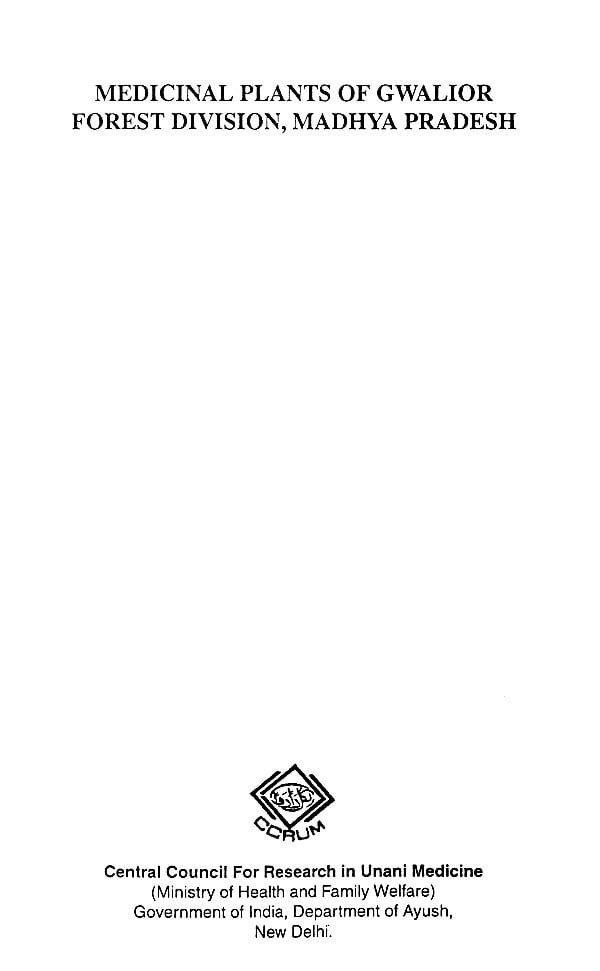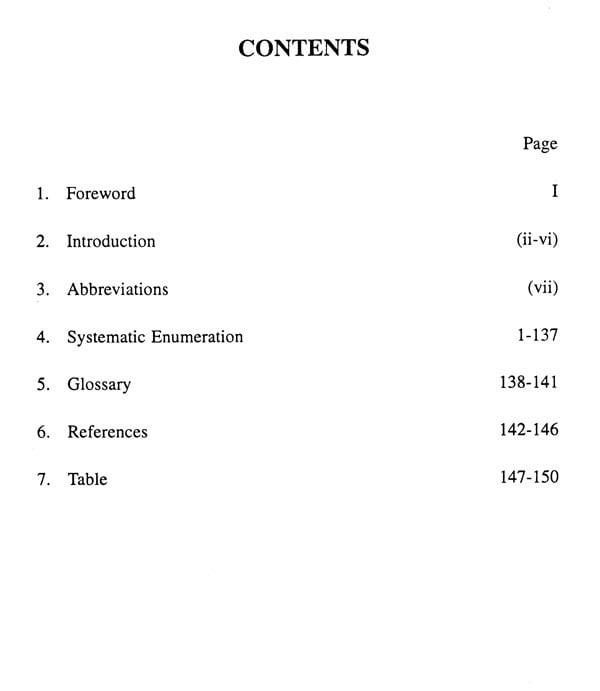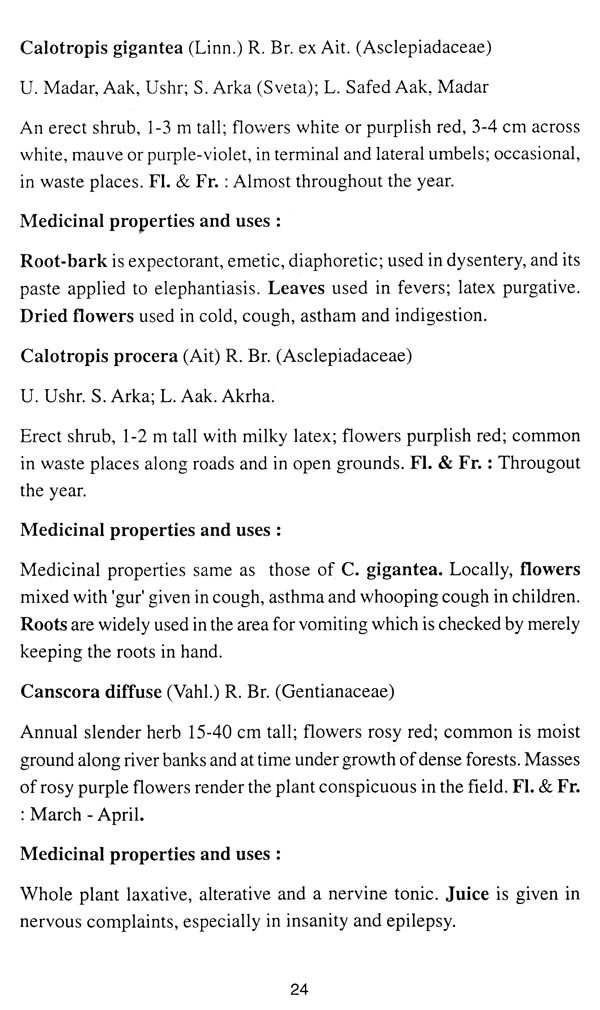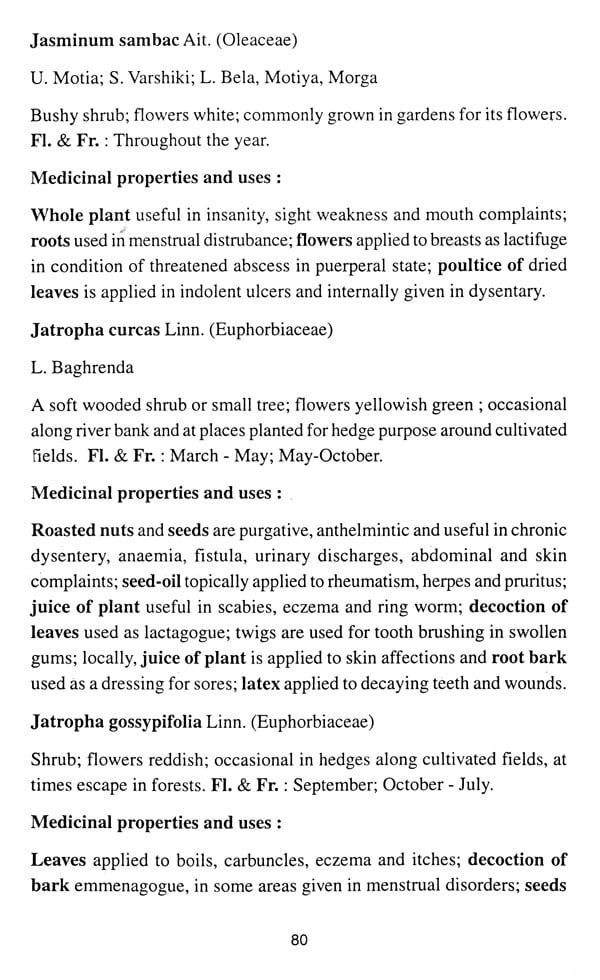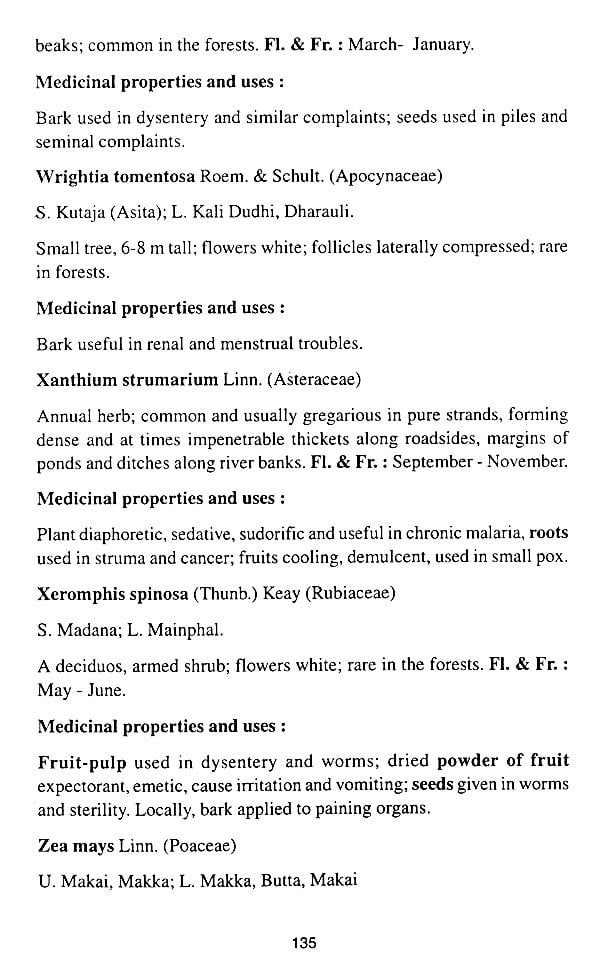
Medicinal Plants of Gwalior Forest Division,Madhya Pradesh
Book Specification
| Item Code: | UBC414 |
| Publisher: | Central Council for Research in Unani Medicine, Delhi |
| Language: | English |
| ISBN: | 9780984861132 |
| Pages: | 158 |
| Cover: | PAPERBACK |
| Other Details | 9.50 X 6.50 inch |
| Weight | 250 gm |
Book Description
India, with a geographic area of around 330 million hectares is endowed with a rich of flora and fauna. The Indian Systems of Medicine (ISM) viz. Ayureveda, Unani and Siddha mainly use plant based raw materials in most of their preparations and formulations. Thus, the credibility of these systems depends upon the use of genuine raw materials in the manufacturer of the of the drugs. Almost 1500 medicinal plants are commonly found and among them about 500 plants are widely used in preparation of medicines ISM.
Forest are the main source of these herbs where they grow wildly. As a result of continuous exploration of these plant from wild and absence of any mechanism for their conservation, a number of medicinal species have become endangered. Thus, there is an urgent need for their inventorisation and economic mapping in different phytogeographic regions of the country.
Based on this rational the present work has been taken up the Council deals with 462 medicinal plant species collected from Gwalior Forest Division. This includes exploration in the different forest ranges viz. Barhai, Behant, Datiya, Dabra & Bhander, Ghatigaon & Gwalior under the Gwalior Forest Division undertaken during 1981-1982, Each medicinal taxon is provided with information on botanical name, family, Unani, Sanskrit and local name. The folk claims gathered systematically through interviewing tribals and other medicine men, present the result of a series of a ethnopharmacological surveys undertaken in the area, disclosing various, hitherto unreported remedies prevalent among tribal communities, particularly those inhabiting the interior forest division. Some of these may open new vistas in the treatment of so far unchecked aliments and contribute to the utility of the flora of this division.
Under the able guidance of Prof. Abrar M Khan, the area was surveyed by Dr. V.K. Singh, Survey Officer and Dr. Mohd. Anis, Research Assistant (Botany) along with other junior staff working in the Survey of Medicinal Plant Unit of the Council, functioning at Regional Research Institute of Unani Medicine, A.M.U., Aligarh.
This compilation had a great acceptance in the scientific community. It is hoped this book will prove a valuable addition to the existing knowledge on medicinal plant of the region and attract wide range audience in the field of ethnobotany, phytochemistry and other scientific community.
Ethno-botanical history is as ald as history of man. Regardless of the fact as to how this process of acquiring knowledge about plants started. It is, however, certain that knowledge about plants spread in a number of countries such as Greece, Palestine, Babylonia, India and China. Although men in these countries has fair amount of knowledge. However, the knowledge they handed over to posterity was imperfect. In all these places the nature of plant world generally ended in futile anthromorphic fables or in deification of important plants (Reed, 1942).
Rigveda contains fair amount of knowledge pertaining to medicinal potentialities of certain herbs which were capable of curing human and animal ailments. The classical treatise on medicinal properties of plants of Dioscorides was rendered into Arabic and was named as 'Kitabul Hashaish by Discorides' (One Century A.D.) which contained medicinal uses of 600 drugs of plant, animal and mineral origin. Others who helped in advancement of Unani System of Medicine, were Rhazes (850-932 A.D.), Avicenna (980- 1037 A.D.), Avenzoar (1072-1162 A.D.), Ibn Baitar (1197-1248 A.D.) etc.
Attempts to acquire knowledge concerning medicinal plants in India were initiated in the later half of 19th Centruy (Drury, 1873 Bentley, 1880; Watt, Dymock 1891; Azam Khan, 1892; Dey 1896. Then Kirtikar & Basu (1918), Kabiruddin (1920), Dutt (1928), Anonymous (1948-76), Chopra et al. (1956, 1969), Biswas (1956), Dastur (1962), Jain (1968), Atal (1977) and others aded extensively to different aspects of uses of plants of medicinal improtance. These works, however dealt with plants of temperate regions and not plants that grow in plains of India. According to Chatterjee (1977), "About 65 percent of more than 20 thousand hectares of land accommodation medicinal plants belong to subtropical and tropical India." Hence, the concept of hills to be natural abode of medicinal and aromatic plants does not hold good.
**Contents and Sample Pages**
